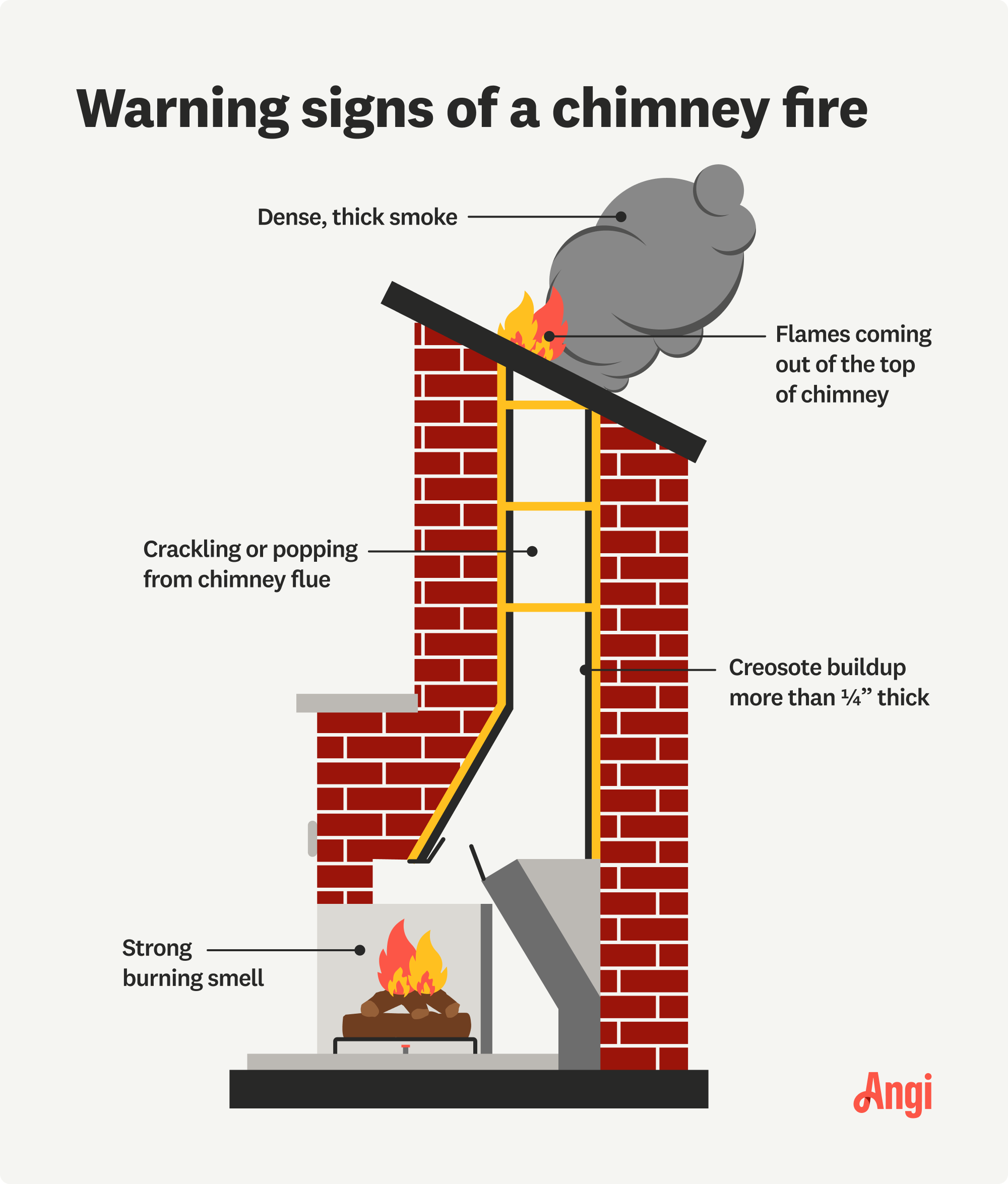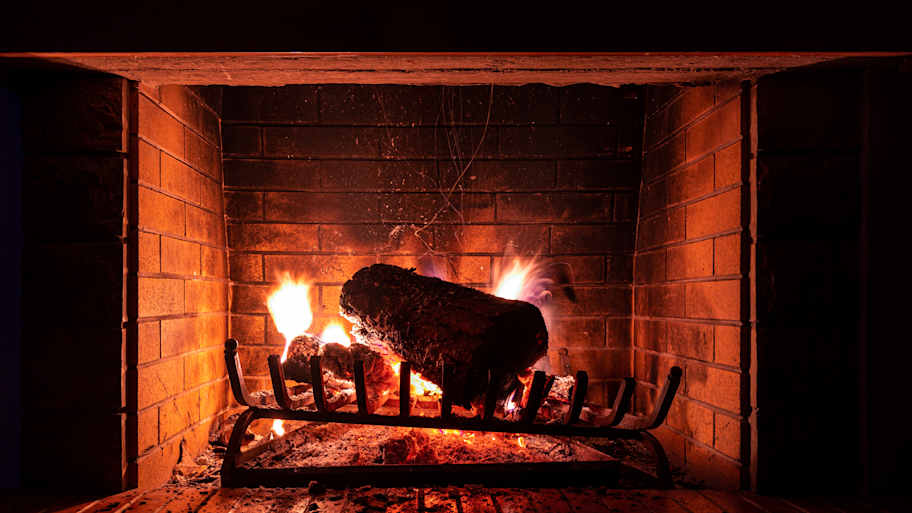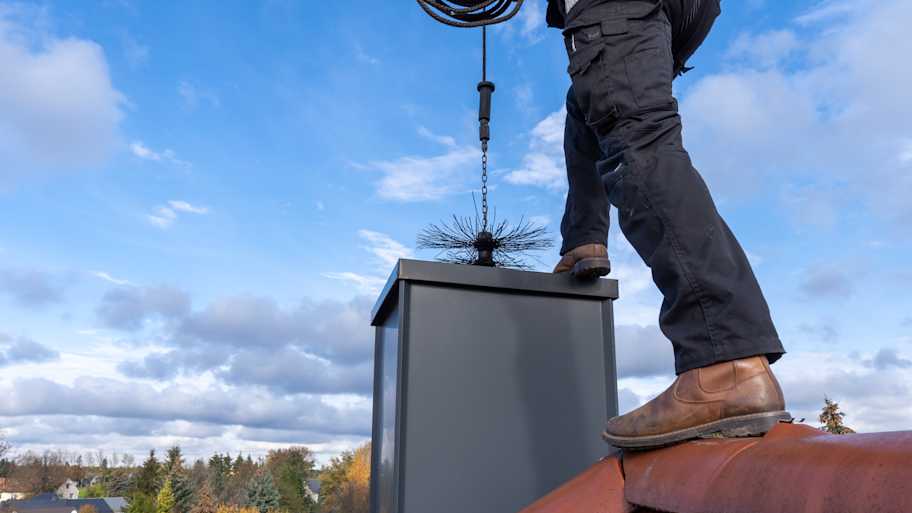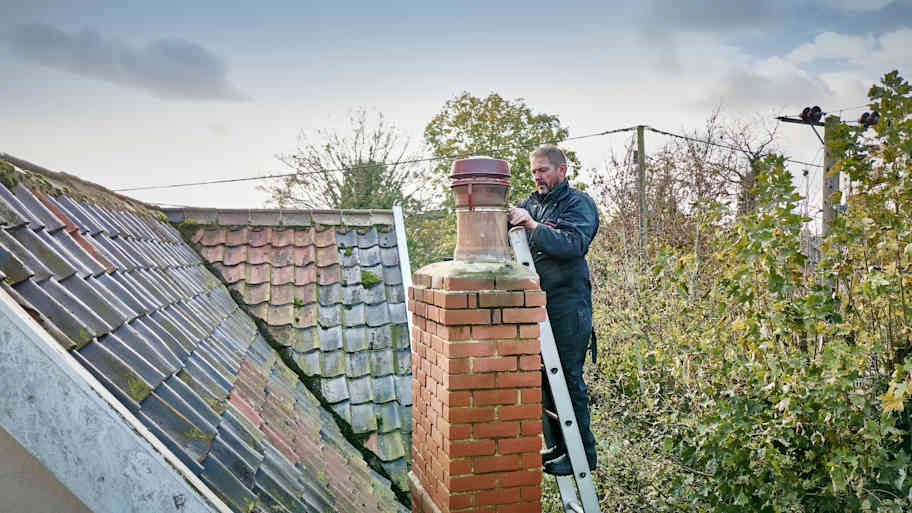
If you’re experiencing chimney airflow problems, a new damper may be in order. Use this guide to learn what goes into your chimney damper replacement cost.
Spoiler: Regular professional fireplace inspections are worth it


Signs of a chimney fire include loud sounds in the flue and a strong burning smell.
Creosote buildup, which is the byproduct of burning wood, is the number-one cause of chimney fires.
Have your fireplace inspected and cleaned annually to decrease your risk of a chimney fire.
If you have a chimney fire, leave your house and call 911.
Whether it’s the chimney liner or a buildup of creosote, chimney fires can be downright dangerous—and unfortunately, it can be hard to immediately tell that they’re happening. Fortunately, the following chimney fire signs, like roaring sounds from the flue or damage to your chimney structure, will give you the heads up as quickly as possible. That way, you can ensure the flames stay where they belong: in your fireplace, keeping you and your family cozy.
You may think a chimney fire isn’t so scary—after all, your chimney or flue might be made of fire-resistant brick or metal. Well, chimney fires can burn extremely hot and escalate extremely quickly. That heat can transfer even through fire-resistant materials and cause a house fire, which can also cause a lot of damage very quickly.
That’s not to mention the fact that fire can be physically hazardous to you and your family members. Even if you don’t sustain burns on your skin, the dense, thick smoke that chimney fires produce can be harmful to your lungs.
In short: You definitely want your fires to stay only in your fireplace. And if you do have a fast-burning chimney fire, the right thing to do is leave your house and call 911 immediately.

Here are nine of the most common warning signs that you may be experiencing a chimney fire.
Yes, most fires have some odor to them—a gentle burning aroma that feels comforting and campfire-esque. But if the smell coming from your fireplace is especially strong and unpleasant, it can indicate a fast-burning chimney fire

While, again, some quiet sounds are a common aspect of the fireplace experience, any crackling or popping—and especially loud roaring or wooshing—coming from your flue could be a bad sign. These sounds will be noticeably louder than, and distinct from, the normal crackles and pops that are limited to the fireplace itself.
Creosote is the thick, dark, tar-like byproduct of burning wood—and like wood, it’s fairly flammable.
Along with increasing the risk of chimney fires, many organizations, including the U.S. Environmental Protection Agency (EPA), have said that creosote is likely carcinogenic to humans, even when it’s not burning. While some creosote buildup is inevitable if you’re burning wood (more on that in just a minute), excess creosote buildup of more than 1/4-inch thick increases the risk of chimney fires. That’s why it’s so important to keep up with regular fireplace maintenance.
If thick, dense smoke is coming from the top of your chimney—or worse, out into your living area from the fireplace—that could also be a sign of a chimney fire. At the very least, smoke coming into your home indicates that the chimney is blocked or otherwise not functioning properly, and you should immediately put out the fire.
This one’s a bit of a giveaway, but still, if you see visible flames coming from the top of your chimney or bits of burning creosote floating out, these could be signs of a fast-burning chimney fire.

While creosote is normally dark, a slow-burning chimney fire could cause the creosote to begin to look gray, ashy, or fluffy. Slow-burning chimney fires can be even harder to detect, so it’s important to take a look at the creosote in your flue from time to time.
Another potential indicator of a slow-burning chimney fire is changes in the color of metal components over time. Also be on the lookout for cracks and damage to the masonry of your chimney outside of the house (or, in some instances, inside around the hearth).
The extreme heat of chimney fires can actually force creosote up and out of your flue. So, if you find bits of creosote outside of your home in the yard or see it on the roof, this could indicate a slower-burning chimney fire.
Heat damage to structures like rooftop antennas or shingles can also be indicative of a slow-burning chimney fire whose heat is warping these components over time.
Leave all chimney work to a pro. Chimney jobs involve working on a roof, potential exposure to creosote, and ensuring a safe repair or installation of chimney parts. Each of these can be seriously harmful or even deadly for anyone without expertise.
If you have a serious suspicion that you’ve had a chimney fire—or are at serious risk for one—you should call a chimney repair pro near you. Because this issue can be downright dangerous, it’s important to get the correct, professional maintenance done regularly. Plus, pro chimney sweeps have the gear and know-how to make sure your chimney is clean and remains fire-free.
If your creosote buildup is at a minimum (less than 1/8-inch of buildup) and you consider yourself a very handy person who’s not afraid to get dirty, you may be able to do some cleaning of your chimney yourself as long as you have proper safety equipment (a respirator mask is a must). However, most people should leave this work to a pro. DIY cleanings are no replacement for regular professional maintenance and assessment, which you should hire a professional for at least once a year.

While there’s no way to guarantee you won’t experience a chimney fire, there are things you can do to drastically reduce your chances of one.
Because the flammability of creosote is one of the main contributing factors to chimney fires, visually inspecting your flue before your next burn can be a key to avoiding a fire. If you see a thick, dark, shiny buildup, chances are your fireplace is ready for a cleaning.
Creosote buildup is the number one cause of chimney fires—and it’s only caused by burning wood. That means that if you have a gas fireplace or electric fireplace, your chances of a chimney fire are far lower.
If you have a wood fireplace and plan on sticking with it, you can also reduce your risk by burning only “seasoned” wood that has been properly dried out for burning. Creosote buildup is especially aggressive when damp wood is burned and only partially combusted—which also means you should avoid leaving your firewood uncovered outside.
We said it before, but we’ll say it again: A fireplace is no place to cut corners. When the risk of not having your fireplace properly cleaned and inspected is, potentially, burning your house down, the right choice is to get the professionals on the job once a year, each and every year.
Hiring a chimney sweep costs an average of about $250, though the price will depend on the complexity of the job and the last time you had the fireplace cleaned. Some pros may charge slightly more on their first visit than on subsequent annual inspections, and you can sometimes get a deal if you have more than one fireplace to inspect and clean.
From average costs to expert advice, get all the answers you need to get your job done.

If you’re experiencing chimney airflow problems, a new damper may be in order. Use this guide to learn what goes into your chimney damper replacement cost.

Chimney repair costs can vary by the type of chimney you have and the required repairs. Use this guide to help you estimate project costs.

Chimney liners are important for fire safety and energy efficiency in your home. Learn how much chimney liners cost based on type, size, material, and other factors.

Oversized flues lead to chimney corrosion, freeze/thaw damage, and an uncomfortable draft. Here are the standard chimney flue sizes to ensure proper integration.

Here is your guide for how to empty a fireplace ash dump so you can keep your hearth tidy, safe, and running efficiently.

If you have a new chimney or chimney liner, you may wonder if metal chimney flues need cleaning. The short answer is yes, you need to clean a metal chimney flue.